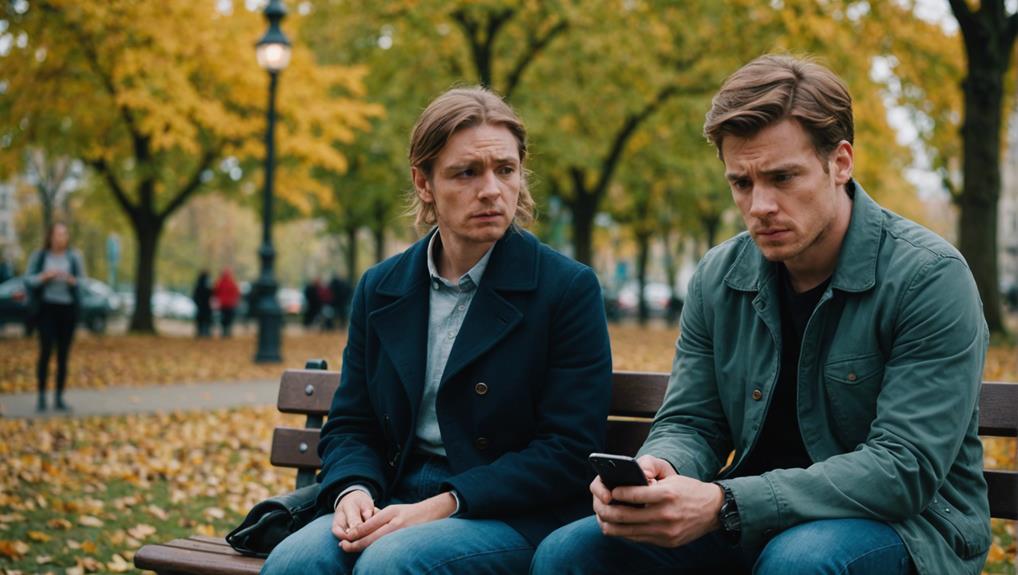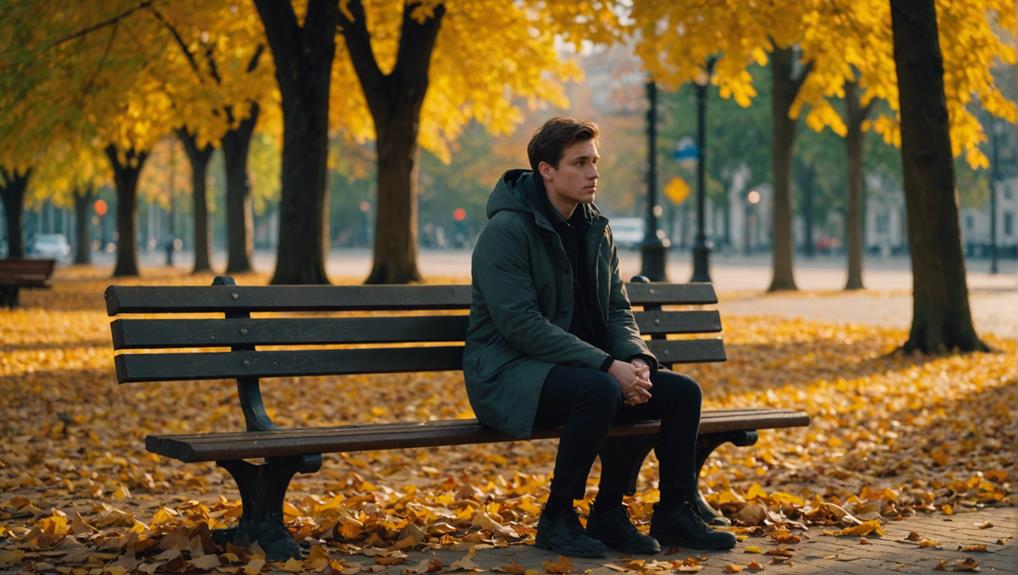The ‘Slow TV’ trend is definitely changing how you relax by shifting focus from fast-paced entertainment to calming visuals that promote mindfulness. You’re encouraged to pause, breathe, and immerse yourself in long, soothing streams like scenic train rides or crackling fires. By prioritizing stillness and reflection, this trend helps reduce stress and mental clutter. If you want to see how these gentle visuals can transform your relaxation routine, keep exploring these calming innovations.
Key Takeaways
- Slow TV promotes mindfulness and mental clarity, encouraging a more intentional and calming approach to relaxation.
- It shifts focus from quick, stimulating entertainment to long, meditative visuals, altering traditional relaxation methods.
- The trend fosters a culture of slowing down, emphasizing quality and presence over passive consumption.
- By incorporating natural and repetitive imagery, Slow TV supports stress reduction and emotional well-being.
- It influences how people integrate leisure, making relaxation a more reflective and mindful experience.

In recent years, the Slow TV trend has gained popularity as viewers seek a calming alternative to fast-paced entertainment. Instead of quick cuts and intense action, you find yourself drawn to long, uninterrupted streams of meditative visuals that invite you to slow down and unwind. This shift in viewing habits isn’t just about entertainment—it’s about creating a space for mindfulness and mental clarity. When you watch Slow TV, you’re not just passively consuming content; you’re engaging with it on a deeper level. The meditative visuals—such as a train journey across a scenic landscape or a crackling fireplace—serve as a gentle backdrop that helps you relax and focus. These visuals are designed to be soothing, often slow-moving and repetitive, encouraging you to pause your racing thoughts and enter a calmer state. Incorporating visual storytelling techniques can deepen the calming effect and foster a stronger emotional connection with the content. Additionally, the long format of Slow TV cultivates mindfulness by encouraging viewers to stay present with the experience rather than seeking constant stimulation. Engaging in such mindful viewing can also enhance your overall mental well-being. The rise of meditative visuals in Slow TV is influencing how you relax. As you watch these calming scenes, your brain shifts into a state of relaxation akin to meditation. It’s a form of passive mindfulness—your mind isn’t racing, but rather absorbing the peaceful imagery. This can reduce stress and promote mental clarity, making it a practical tool for managing anxiety or busy schedules. Additionally, incorporating elements like nature scenes or slow movements can enhance the benefits by aligning with principles found in meditative practices. The trend also alters your perception of entertainment; it’s no longer about constant stimulation, but about creating a space for stillness and reflection. The practice of meditation and relaxation techniques can further support this calming experience and deepen the benefits. As you incorporate Slow TV into your routines, you might notice a change in how you approach relaxation, valuing quality over quantity and seeking moments of calm amid your busy life.
In essence, the Slow TV trend is transforming how you view relaxation. It emphasizes meditative visuals that encourage viewer engagement in a more mindful, intentional way. This shift invites you to slow down, appreciate the present, and find peace in the simplicity of everyday scenes.
Frequently Asked Questions
How Does Slow TV Influence Mental Health?
Slow TV influences your mental health by encouraging mindfulness meditation through calming visuals and sounds. It helps you slow down, focus, and reduce stress, fostering a sense of tranquility. As you watch long, soothing scenes, you lower anxiety and promote relaxation. This gentle approach to leisure supports stress reduction, making it easier for you to manage daily pressures and improve overall well-being.
What Are the Origins of the Slow TV Trend?
Imagine a gentle river carving its path—this mirrors the origins of Slow TV. You learn that meditative visuals and the desire to escape fast-paced life sparked this trend. Rooted in Norway’s cultural origins, it started with long broadcasts of simple, everyday scenes. This movement invites you to slow down, reflect, and find peace amid ordinary moments, transforming TV into a calming, meditative experience that soothes your mind.
Is Slow TV Suitable for All Age Groups?
You might find slow TV suitable for many age groups, but it depends on individual preferences. It encourages family engagement by providing calming, shared experiences, making it ideal for family relaxation. However, technological accessibility can be a barrier for some seniors or those with limited devices. Overall, slow TV offers a gentle way for most ages to unwind, but consider personal comfort and tech skills for the best experience.
How Do Content Creators Produce Slow TV Programs?
Did you know that many slow TV programs feature hours of nature scenes and everyday routines? As a content creator, you produce these by filming long, uninterrupted shots, often with minimal editing. You choose calming visuals like forests or train journeys, then guarantee smooth, steady footage. You might also add subtle soundscapes to enhance relaxation, creating a tranquil experience that encourages viewers to unwind and disconnect from fast-paced life.
Can Slow TV Help Improve Sleep Quality?
Slow TV can improve your sleep quality by creating a calming sleep environment. Watching soothing, slow-paced content helps you unwind and reduces stress, making it easier to fall asleep. Incorporating relaxation techniques like deep breathing while watching Slow TV enhances its benefits. By establishing a peaceful routine, you signal your body to relax, helping you get better rest and wake up refreshed.
Conclusion
As you explore slow TV, you might find it genuinely shifts how you unwind. This trend encourages you to savor each moment, fostering mindfulness and reducing stress. While some may doubt its lasting impact, the steady, calming visuals prove that taking time to pause isn’t just a fad—it’s a way to reconnect with yourself. So, give it a try; you might discover that slowing down truly transforms your relaxation routine.
Amina brings over a decade of journalism experience to her role as Editor-in-Chief. Under her leadership, Exquisite Post has flourished, maintaining the highest standards of integrity and excellence. Amina’s commitment to truth and her visionary approach guide the editorial team in producing impactful news stories that resonate with our audience.










